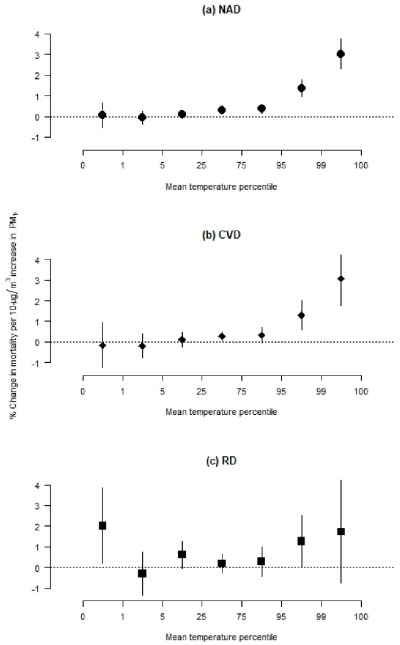論文情報
著者: Satbyul Estella Kim, Yasuaki Hijioka, Tatsuya Nagashima, and Ho Kim
年:2020
掲載誌:atmosphere, 11(1), 18
論文へのリンク(英文のみ)
キーワード
air pollution; particulate matter; health impact; elderly mortality; South Korea.
要旨
Climate change, air pollution, and the rapidly aging population are important public health challenges. An understanding of air pollution impacts is imperative for preventing air-pollution-related deaths and illnesses, particularly in vulnerable subgroups such as the increasing population of older adults. To assess the effects of short-term air-pollution exposure on the elderly, we conducted a time-series analysis (1996–2015) of the associations between particulate matter with an aerodynamic diameter of <10 μm (PM10) and deaths among elderly residents of Seoul, South Korea, which has a rapidly aging population. We also investigated the synergistic effects of temperature and the lag structures of the effects by sex, cause of death, and season. A 10 μg/m3 rise in the 4-day moving average concentration of PM10 was associated with 0.31% (95% confidence interval (CI): 0.18% to 0.44%), 0.32% (95% CI: 0.09% to 0.55%), and 0.22% (95% CI: –0.23% to 0.66%) increases in non-accidental, cardiovascular, and respiratory mortalities, respectively. We found a significant and strong synergistic effect of PM10 concentration and ambient temperature on mortality in elderly people. PM10 posed an increased risk of non-accidental or cardiovascular mortality with increasing temperature, whereas the associated risk of respiratory death was highest on very cold days. The shape and length of the lag structure varied with the cause of death, sex, and season. Results indicate that elderly people exposed to PM10 are at increased risk of premature death. In the near future, these risks are likely to increase in step with the temperature rise associated with climate change and the continued population aging. Stronger emission controls will be needed to minimize the increased health risks associated with air pollution, especially in regions with high populations of elderly individuals.





